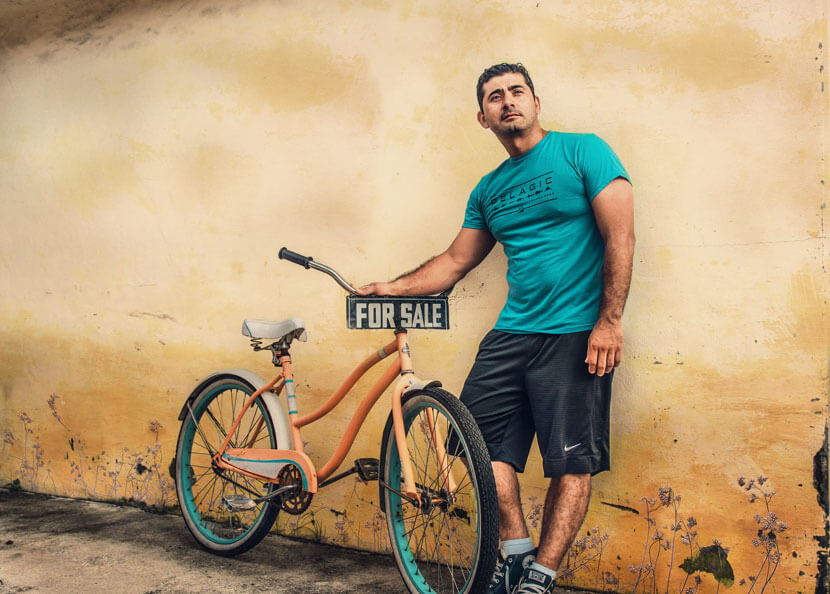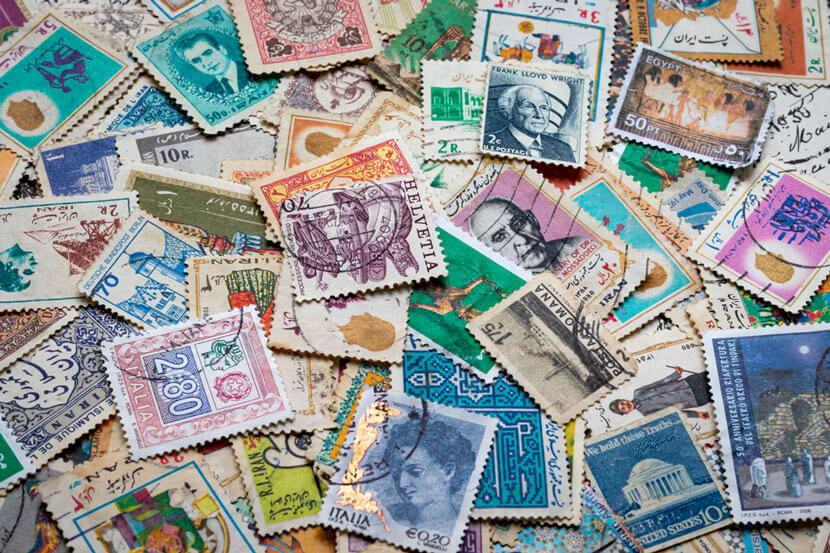Odds are that you’ve never had to plan an estate sale before, and you have a lot of questions about how to hold an estate sale. Who do you contact? What do you sell? What the heck is an estate sale in the first place? There are professional companies out there who can do it for you, but they cost a lot of money—and you probably don’t need their help anyway! A DIY estate sale is completely doable on your own with the right yard and estate sale tips, tricks, and advice.
In this three-part series, our experts at Yard Sale Radar will show you the specifics of how to hold an estate sale so that you know what to expect, how to plan it, how to sell as much as possible, and how to make the most money.
What Is an Estate Sale?
Many people planning their first estate sale aren’t entirely sure what an “estate sale” actually is or how an estate sales works. Sometimes, you will hear this term misused as a fancier way of referring to a regular yard sale. However, an estate sale is different from a yard sale.
The big difference between a yard sale and an estate sale is that an estate sale is the liquidation of most or all of the physical belongings in a home. Generally held after a death or family crisis, an estate sale is much bigger than a yard sale. If you don’t know when and how to hold an estate sale, here are some of those reasons for doing it:
| Common Reasons for a Yard Sale | Common Reasons for an Estate Sale |
|---|---|
|
|
|
|
|
|
|
|
|
|
Another important distinction is that, unlike a yard sale, an estate sale doesn’t necessarily involve hauling things out into the yard. Instead, buyers come into the home itself and move through most or all of the rooms while they shop. The only thing you really have to do to prepare is decide what you want to sell, how much you want to sell it for, and then post your prices!

What Is Your Goal?
The first part of figuring out how to hold an estate sale is understanding your goal. Different goals require different strategies. For example, if your goal is to earn money, your strategy to get there will be much different than someone’s strategy whose goal is to get rid of everything.
Take InventoryThe next part of figuring out how to hold an estate sale is to take inventory. For a DIY estate sale to succeed, you need to know what you’re selling!
What to Do About the Small Stuff: Walkthrough each room of the house and make a list of everything. Itemizing an entire house can be quite a big project and in some cases your time may be limited, so we recommend that you create a cutoff point when it comes to your itemizing. For belongings that are too small, too numerous, or too low in value to make your cutoff, don’t itemize them individually. Instead, list them as bulk under a related category.
Example: Crafting Supplies. If you have a bunch of push pins, needles, glue sticks, and so forth, you don’t need to individually itemize all of these. Just make sure you gather them all together into the same boxes, and either sell them in bulk or let people pick out items individually at a fixed price (3 items for $1).
Tip: Generally speaking, the more items you sell separately, the more money you will make overall.
What to Do About the Big Stuff: One of the keys to knowing how to hold an estate sale is figuring out what to sell outside of the sale. Estate sales, like regular yard sales, tend to sacrifice an item’s potential value in favor of getting rid of things more quickly. However, there will always be some things you should sell separately using individual sales on Facebook community groups and sites like Craigslist.
 Example: Collector’s Items. Collector’s items such as rare stamps or Magic: The Gathering cards have virtually no value outside the community of people who collect them. Unless your community has a number of local collectors, and you do a really good job of promoting your sale to these collectors by advertising your yard/estate sale on sites like Yard Sale Radar, you should sell these items separately. If you don’t know how to hold an estate sale, you might put these things up for sale without realizing it and miss out on hundreds or thousands of dollars. Alternatively, you might get no buyers simply because no collectors show up.
Example: Collector’s Items. Collector’s items such as rare stamps or Magic: The Gathering cards have virtually no value outside the community of people who collect them. Unless your community has a number of local collectors, and you do a really good job of promoting your sale to these collectors by advertising your yard/estate sale on sites like Yard Sale Radar, you should sell these items separately. If you don’t know how to hold an estate sale, you might put these things up for sale without realizing it and miss out on hundreds or thousands of dollars. Alternatively, you might get no buyers simply because no collectors show up.
Example: Niche High-Value Items. Vehicles (including ones like lawnmowers), precious estate jewelry for sale, hot tubs, and other high-value niche items can potentially get a lot more money if you sell them outside your estate sale. Even if you don’t mind taking the financial hit, there is the question of demand. Anyone will buy jewelry if you sell it cheaply enough, but hauling home a hot tub is a lot of work. Something to understand about how to hold an estate sale is to realize that your potential buyers are a very general audience and probably aren’t interested in large, awkward things.If you want, you can try selling some of these high-value items at your DIY estate sale anyway, and if they don’t sell, you can sell them separately afterward.
What to Do About Items that Aren’t for Sale: Be sure to make a note on your inventory of which items you don’t intend to sell. Those who already know how to hold an estate sale will tell you that the sale is a confusing, busy time, and there will be mistakes. The last thing you want is for someone to walk away with something you didn’t want to sell just because you were too busy to notice! Protect items you don’t wish to sell by physically removing them from the property. If that’s not possible, move items you don’t wish to sell into a room and keep that room closed off to the public during the sale.Next Up: Preparing!A DIY estate sale is a lot of work, but with the right tips, you can do it on your own!In the next installment of our three-part series about how to hold an estate sale, we’ll look at preparing for your sale including the best ways to advertise your estate/yard sale.In the meantime, we suggest visiting some local estate sales in your area to get a better idea of what they’re like. For more general sale questions, be sure to check out our FAQ for our expert’s advice!
| Get Rid of the Most Stuff | Earn the Most Money | Have the Easiest Sale |
|---|---|---|
|
|
|
|
|
|
|
|
|
|
|
|
|
|
|
|
||
|
||
|
Take Inventory
The next part of figuring out how to hold an estate sale is to take inventory. For a DIY estate sale to succeed, you need to know what you’re selling!
What to Do About the Small Stuff
Walkthrough each room of the house and make a list of everything. Itemizing an entire house can be quite a big project and in some cases your time may be limited, so we recommend that you create a cutoff point when it comes to your itemizing. For belongings that are too small, too numerous, or too low in value to make your cutoff, don’t itemize them individually. Instead, list them as bulk under a related category.
Example: Crafting Supplies. If you have a bunch of push pins, needles, glue sticks, and so forth, you don’t need to individually itemize all of these. Just make sure you gather them all together into the same boxes, and either sell them in bulk or let people pick out items individually at a fixed price (3 items for $1).
Tip: Generally speaking, the more items you sell separately, the more money you will make overall.
What to Do About the Big Stuff
One of the keys to knowing how to hold an estate sale is figuring out what to sell outside of the sale. Estate sales, like regular yard sales, tend to sacrifice an item’s potential value in favor of getting rid of things more quickly. However, there will always be some things you should sell separately using individual sales on Facebook community groups and sites like Craigslist.

Example: Collector’s Items. Collector’s items such as rare stamps or Magic: The Gathering cards have virtually no value outside the community of people who collect them. Unless your community has a number of local collectors, and you do a really good job of promoting your sale to these collectors by advertising your yard/estate sale on sites like Yard Sale Radar, you should sell these items separately. If you don’t know how to hold an estate sale, you might put these things up for sale without realizing it and miss out on hundreds or thousands of dollars. Alternatively, you might get no buyers simply because no collectors show up.
Example: Niche High-Value Items. Vehicles (including ones like lawnmowers), precious estate jewelry for sale, hot tubs, and other high-value niche items can potentially get a lot more money if you sell them outside your estate sale. Even if you don’t mind taking the financial hit, there is the question of demand. Anyone will buy jewelry if you sell it cheaply enough, but hauling home a hot tub is a lot of work. Something to understand about how to hold an estate sale is to realize that your potential buyers are a very general audience and probably aren’t interested in large, awkward things.
If you want, you can try selling some of these high-value items at your DIY estate sale anyway, and if they don’t sell, you can sell them separately afterward.
What to Do About Items that Aren’t for Sale
Be sure to make a note on your inventory of which items you don’t intend to sell. Those who already know how to hold an estate sale will tell you that the sale is a confusing, busy time, and there will be mistakes. The last thing you want is for someone to walk away with something you didn’t want to sell just because you were too busy to notice! Protect items you don’t wish to sell by physically removing them from the property. If that’s not possible, move items you don’t wish to sell into a room and keep that room closed off to the public during the sale.
Next Up: Preparing!
A DIY estate sale is a lot of work, but with the right tips, you can do it on your own!
In the next installment of our three-part series about how to hold an estate sale, we’ll look at preparing for your sale including the best ways to advertise your estate/yard sale.
In the meantime, we suggest visiting some local estate sales in your area to get a better idea of what they’re like. For more general sale questions, be sure to check out our FAQ for our expert’s advice!

